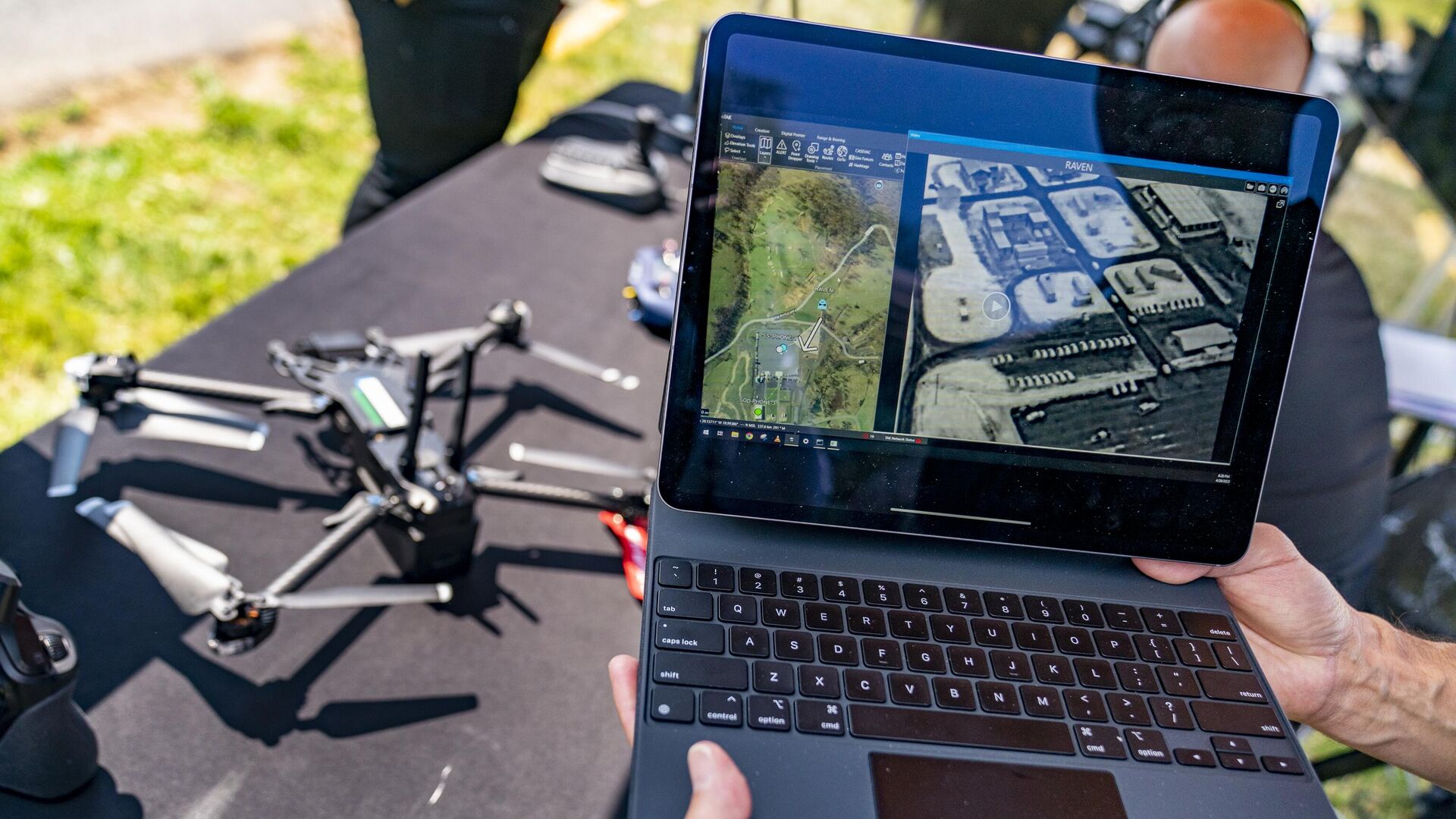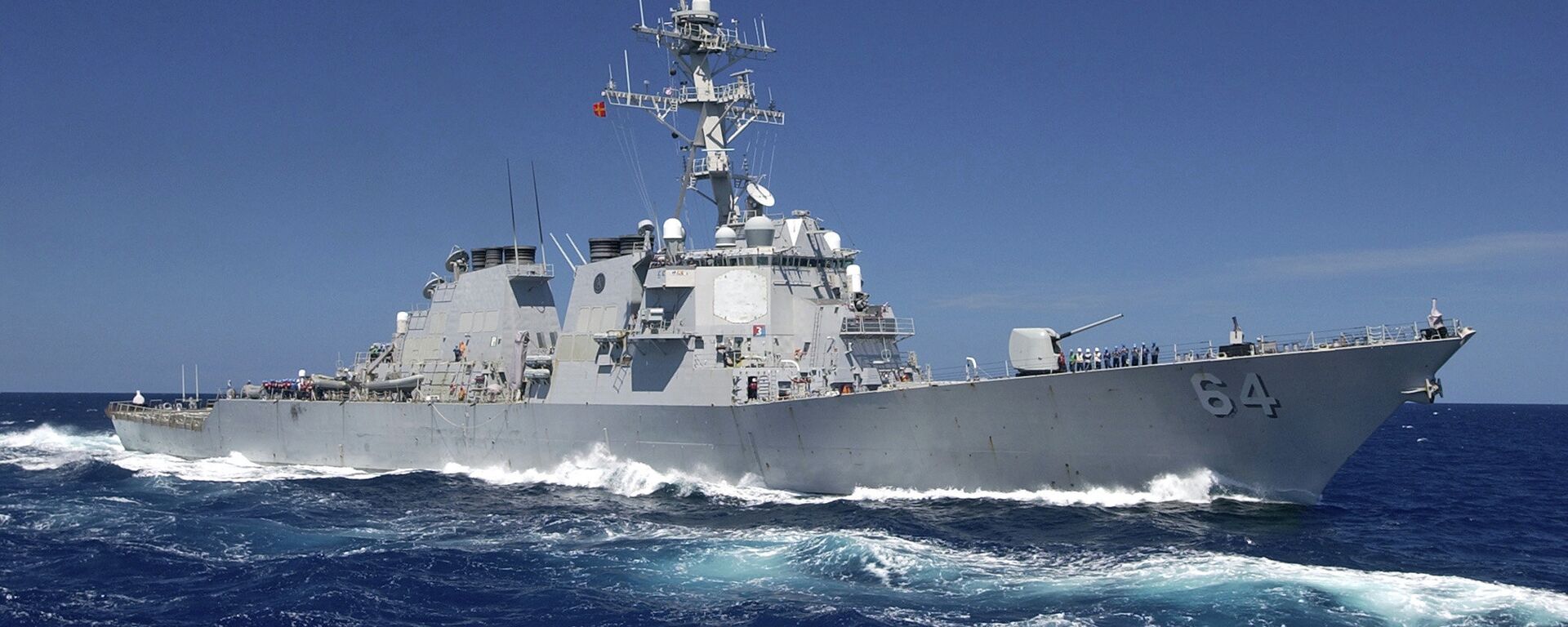Ex-Pentagon Analyst: Ossified MIC to Prevent US From Ramping Up Counter-Drone System Production

© AP Photo / Andrew Harnik
Subscribe
The Pentagon will have trouble getting weapons makers to mass produce counter-drone weapons for quite a while, due to its entrenched and decades-old acquisition system that was dependent on the US being the world’s foremost military power, a former Pentagon analyst told Sputnik.
A top Pentagon official said the US needs to dramatically increase its production of counter-drone systems to maximum capacity during the Reagan National Defense Forum in California over the weekend.
“The production for counter-UAS [has] to go through the roof,” US Under Secretary of Defense for Acquisition and Sustainment Bill LaPlante told forum-goers, comparing the need to that faced a year ago when the US was rapidly running out of 155-millimeter artillery shells after having sent its entire stockpile to Ukraine.
According to US media reports, LaPlante and other top Pentagon officials have been using a chart of the growth of 155-millimeter artillery shell production capacity over time as part of their efforts to pressure defense contractors into pumping out more anti-drone weapons and loitering munitions, which are also called “kamikaze” or suicide drones.
“The industrial base has to be able to produce these at high numbers,” LaPlante said.
Retired US Air Force and former Pentagon analyst Lt. Col. Karen Kwiatkowski told Sputnik that the privately-owned military-industrial firms face a slew of obstacles to ramping up production of brand-new systems like counter-drone weapons, including research and development (R&D), questions of demand for buyers, and stability in Congress for funding such contracts.
“As LaPlante noted, the money being spent thus far by the US on these types of systems is in R&D. Shifting from an incomplete and ongoing research and development mode to a production mode takes time, and also decisions by Congress to fund - and that requires a production proposal and cost estimates - something that the US doesn't have yet,” she explained.
“Production costs are reduced at scale, but Mr LaPlante and the Pentagon confuse Congressional demand with ‘market’ demand. Market demand and market signals are faster and more accurate than the political signals that drive and control the US defense industry. Smaller and more agile international producers may have an advantage over the big five American firms that make counter-drone and loitering technologies and munitions.”
However, she said that the “identification of a persistent demand globally” was the first obstacle to ramping up production - something that could be highly dependent on the White House’s foreign policy. Demand for anti-drones systems is likely to become less acute if a more isolationist government replaces the present interventionist-minded one.
Another part of the equation is Congress, which must be “convinced to pay for this newer and costly segment of Pentagon spending,” Kwiatkowski said.
“Assuming the US continues on a path of global political and military interference, and a 2- or 2-and-a-half-front war aspiration, the Congress may be successfully lobbied and the share of the budget that goes into the Pentagon and the CIA will increase to over a trillion dollars annually,” she said. “But given the interest cost and the massive deficits - and the inability of the shrinking US middle class to pay their taxes - this could be problematic even for a pro-war Congress and administration, without canceling other less-needed capabilities, like the F-35, which would be impossible to do at this point barring national bankruptcy.”
“The third obstacle, of course, is the ramp-up speed of the US manufacturing sector for these technologies. As we have seen with aid to Ukraine, mass munitions and small arms, as well as complex technological consumables, even with tens of billions of dollars made available for pre-existing technologies and existing production lines, it was not enough to make even the slightest difference in the Ukraine war.
"The first money that is spent profits the corporations, their pay and bonuses, and upgrades to infrastructure and manpower (factory upgrades, manpower hires, and other corporate investment). Then you see the output increase, and as many of these wars that are driving the counter-drone (and drone) demand are relatively short-lived, by the time the infrastructure and manpower improvements are in place, the demand is less urgent. The system then lobbies for the longer run, and cost plus contracts for the next time,” she explained.
Kwiatkowski highlighted that for decades, the Pentagon has been able to rely on “endless upgrades” for off-the-shelf equipment, which has streamlined much of its acquisition policies. However, that system was dependent on US global dominance - something that can no longer be taken for granted, making the recent funding issues created by Congress into a threat for the development of new systems like anti-drone weapons.
“Because of cyclical political and short-term war trends drive the money that funds the Pentagon, it clings to the long-term systems with endless upgrades for the bulk of their profit, along with R&D which is interminable, and often financially rewarding for these companies even when programs end up not working, as we have seen with the long history of Ballistic Missile Defense and also more recent forays into hypersonic missiles,” she said. “So when you follow the money, both in terms of Congressional enthusiasm to fund this or that, and Pentagon/corporate interest in long term growth and steadiness, you can see what falls through the cracks: small munitions in mass numbers and highly experimental technologies that have massive competition in design and production around the world.”
“Just like the US consumes produced end items from the rest of the world, the US defense industry is also dependent on production capabilities from the rest of the world, and has a long acquisition history of buying ‘off the shelf.’ As the world bifurcates into multipolar and shifting alliances, this approach that the US has invested in for decades, can become another weak point. It's not just consistent funding, it's how to actually shift how the Pentagon is invested - and that is like moving a mountain.”



